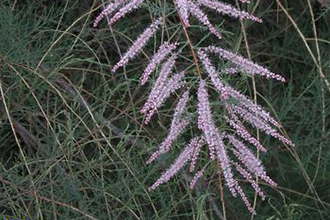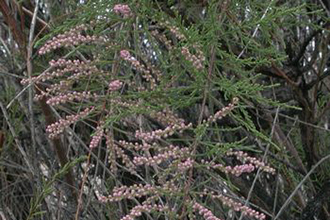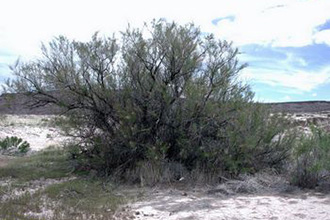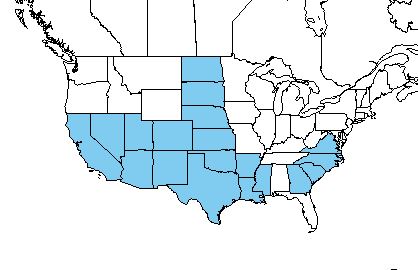Taxonomy: Kingdom - Plantae (plants). Subkingdom - Tracheobionta (vascular plants). Superdivision - Spermatophyta (seed plants). Division - Magnoliophyta (Flowering plants). Class - Magnoliopsida. Order - Violales. Family - Tamaricaceae (Tamarix family). Genus -Tamarix L. Species - Tamarix ramosissima Ledeb.
Ecology: A deciduous shrub or small tree in the Tamarisk family (Tamaricaceae) growing to 1.5-9 meters in height and forming dense thickets. Stems are slender, light red, or orange-yellow and weeping when young. Older bark is grey. Leaves are compound, alternate, scale-like and tightly overlapping along the stem. Flowers are pale pink to white dense plumes that bloom from early spring to late fall. Fruit capsules contain numerous tiny (1/25 –inch diameter) seeds. Reproduction is by root expansion, resprouts and by seeds that are dispersed through the air and by water



